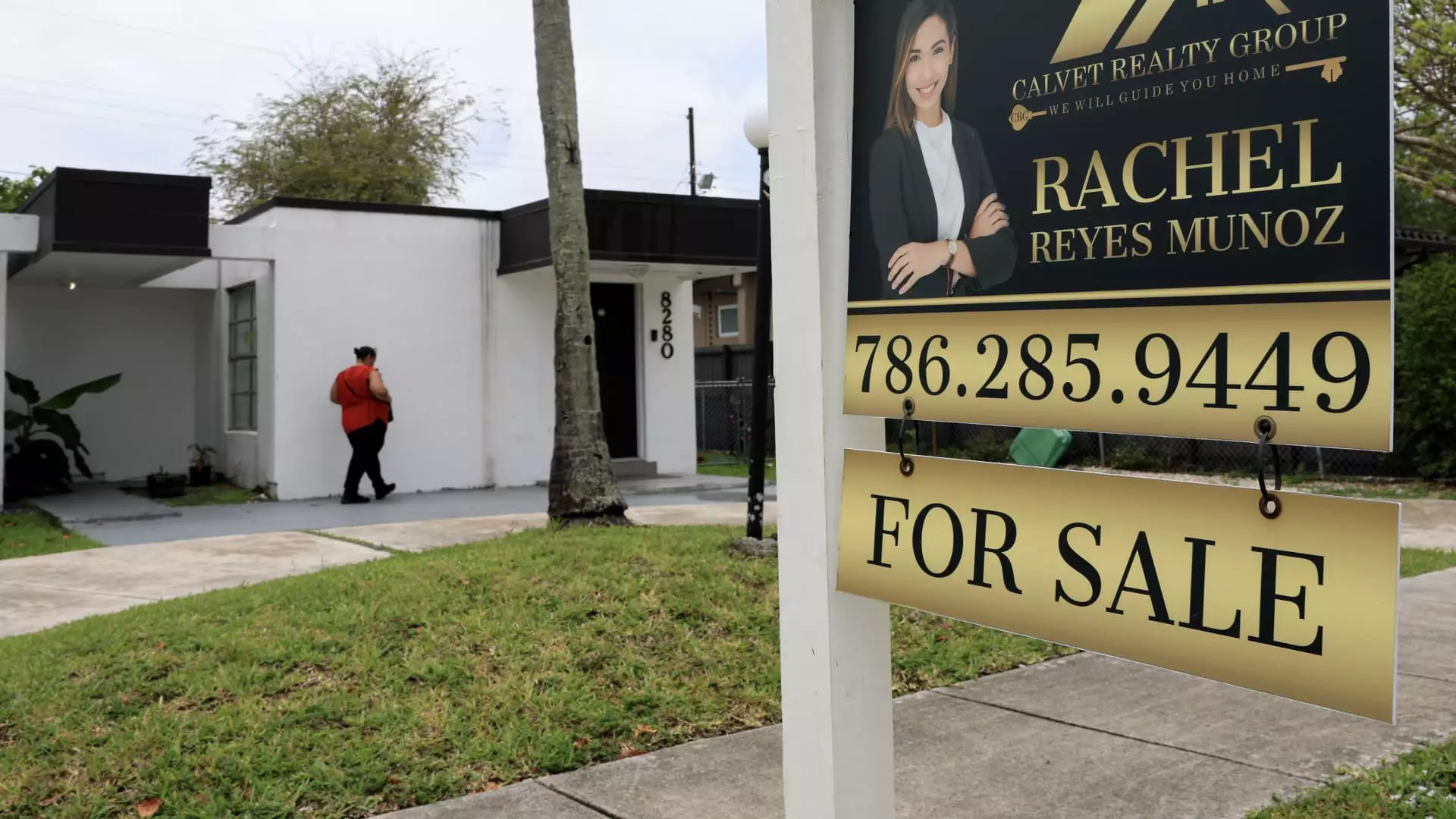The recent uptick in mortgage applications indicates more than just numbers; it demonstrates a palpable shift in the psyche of homebuyers who may have felt trapped in a stagnant market. For the second consecutive week, mortgage demand has risen, with total application volume climbing by 1.1%. Such growth is particularly significant given the backdrop of economic uncertainty and rising interest rates. Potential buyers appear to be drawn to the increasing inventory of houses, suggesting a sense of renewed optimism amid competing fears.
This surge can be interpreted as prospective homeowners deciding that the prospect of owning a home—with all its associated freedoms—outweighs the volatile economic landscape. The recent increase in total active listings, now 14% higher than last year, reflects a more favorable environment for buyers who have often been left to bemoan the lack of options in previous years. This moment marks a possible turning point in a housing market that had been stagnant, offering a glimmer of hope for those who have postponed buying due to external pressures.
Interest Rates: An Unyielding Challenge
Despite the positive trends in application volume and inventory, the average interest rate for a 30-year fixed-rate mortgage remains a critical factor to watch. Currently hovering around 6.86%, these rates have risen slightly from the previous week, continuing a pattern that has persisted over the past year. It’s a painful reminder for many potential buyers that while there may be more houses available, the cost of financing remains a significant barrier to entry. It strains the narratives of affordability, forcing buyers to navigate the delicate balance between supply and financial feasibility.
Michael Fratantoni, chief economist at the Mortgage Bankers Association (MBA), noted the consequential nature of these trends, stating how the growing inventory may encourage more transactions. Yet one wonders if this retention of higher interest rates will clash dramatically with the buoyancy of increased applications. Such a contradiction holds the potential for an unpredictable market, where those looking to break into homeownership might still find themselves held back.
The Rise of Government-Backed Loans
An encouraging metric within the recent data is the notable rise in government-backed purchase applications, which surged nearly 5% within just one week. This trend signifies an essential lifeline for lower-income and first-time homebuyers who might otherwise struggle to compete in a landscape characterized by rising costs. With 40% more applications than the same time last year, these government loans serve as critical access points, allowing socio-economic diversity to flourish in neighborhoods that may have previously been out of reach.
However, while this segment of the market is noteworthy, it does bring to light an uncomfortable truth: the very foundation of our economy is being simultaneously tested while we cheer on these increases. Our housing market must be nurtured, not just to facilitate purchase applications, but to ensure that homes remain within reach for those who genuinely need them.
In closing, the current state of the housing market presents a fascinating paradox—where rising optimism collides with the harsh realities of economic constraints. The gains in mortgage applications symbolize hope, yet we cannot ignore the critical challenges that still lie ahead. As we stand in this intersection, it’s essential to foster not just growth but also equitable access so that the renewed drive to buy homes becomes a reality for all.

